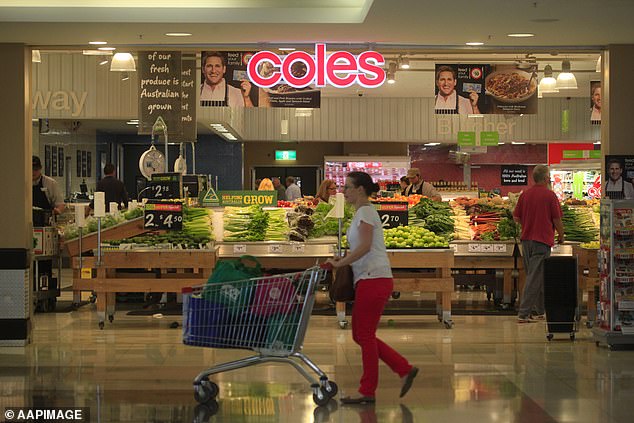Coles posts staggering $1.1 billion profit – and single customer trend has sent sales through the roof

- Coles posted a profit of $1.1 billion
- Annual financial results announced on Tuesday
Coles’ profit rose 8 percent to $1.1 billion.
The supermarket giant released its annual financial results on Tuesday morning, showing that revenues followed the same upward trend, up 4.4 percent for the year to $43.6 billion.
The total dividend to shareholders increased from 66 cents per share to $0.68.
The results cover the entire Coles Group stable, including the Coles and Coles Local stores, Liquorland, First Choice Liquor Market and Vintage Cellars.
“There were a number of challenges throughout the year, including changing customer behavior, increased external scrutiny and cost inflation,” said CEO Leah Weckert.
She added that financial pressures in the household were ‘at the forefront’.
Australians struggling with the cost of living and preferring to cook at home rather than eat out are driving stronger-than-expected sales and profits.
“We continue to see customers eating out less, and our Coles Finest range and ready meals continue to be the fastest growing categories,” Ms Weckert said.

Coles profit grew 8 percent to $1.1 billion
This comes after the supermarket announced in February that sales rose but profits fell.
Coles’ sales rose 6.8 percent to $22.2 billion in the 27 weeks to December 31, but profit fell 3.6 percent to $616 million compared with the same period a year ago.
The main culprits were higher leasing costs and higher interest rates, both of which contributed roughly equally to Coles’ $26 million increase in financing costs to $213 million.
“Just as households pay higher interest rates on their mortgages, we also pay higher interest rates on the debt we take on to run our businesses,” Ms. Weckert said at the time.
Supermarket prices rose by three percent in the second quarter of 2023/24, compared with a 3.1 percent increase in the first quarter. Prices excluding tobacco and fresh produce rose by four percent, down from 5.7 percent.
Ms Weckert said a number of changes have reduced shoplifting, which was a problem after the pandemic.
The measures include improved training, security at entrances and exits and technological solutions, she added.




